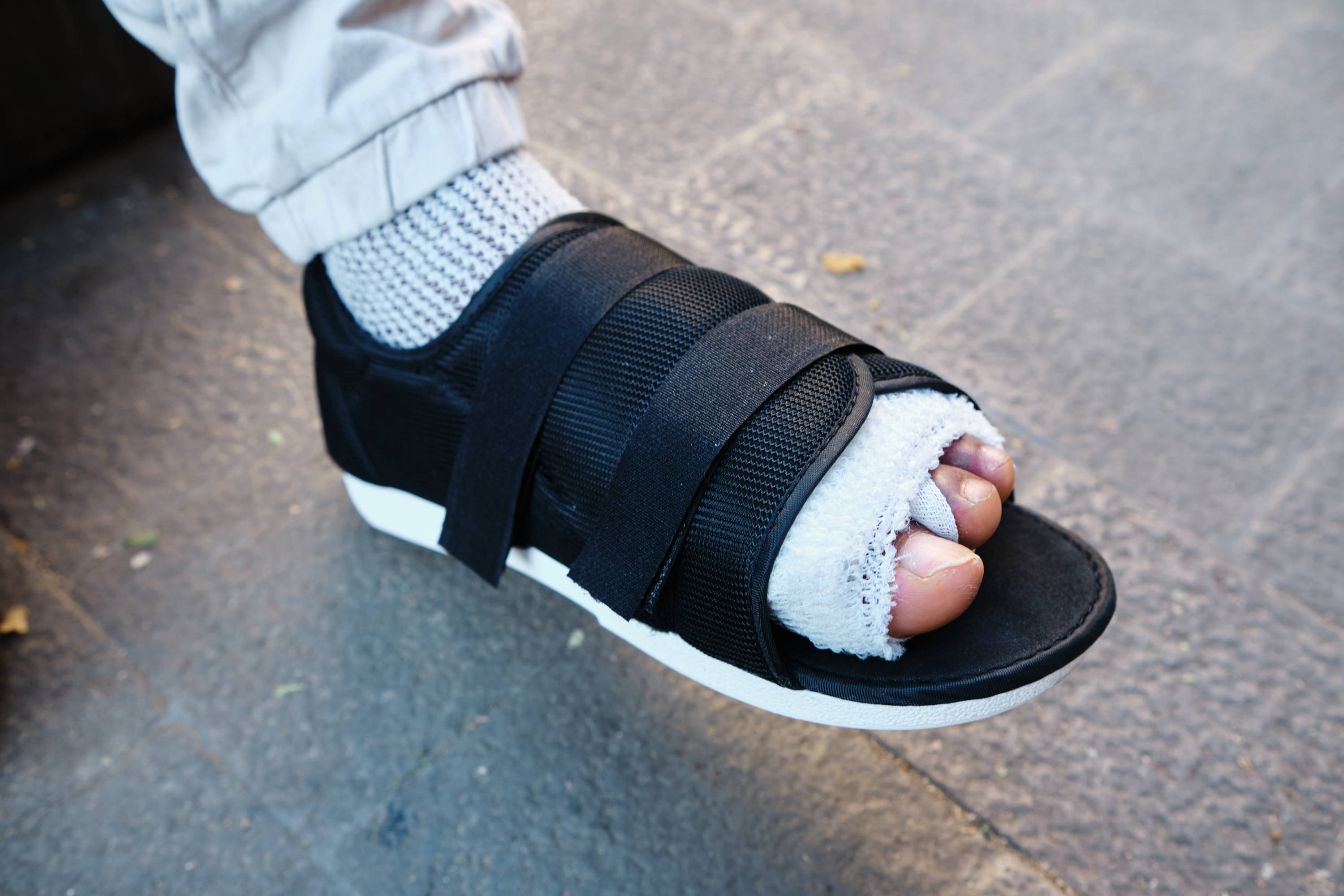Osteoporosis (not to be confused with osteoarthritis, a localized joint disease) is a systemic and chronic condition causing weak and porous bones. It often affects the spine, hips, and wrists most obviously, but is a systemic disorder. This condition happens when the normal balance between removing some bone to replace it with newer bone is altered. The human body is constantly undergoing repair and maintenance at the cellular level, and bone is one organ for which this occurs. When that repair and maintenance function is changed to lean toward more bone removal than replacement, eventually the density and strength of the bone are reduced. This is osteoporosis.
Bone density is the structural characteristic that makes bones strong, and when density is lost, bones become weak, fragile, and thin. Bones in the feet are also susceptible to losing density. Many cases of foot pain can be traced to subtle stress fractures from weak bone, due to osteoporosis. Doctors commonly use a noninvasive test called a DEXA scan to measure bone density, diagnose osteoporosis, and prescribe appropriate interventions.
“After the age of 50, unfortunately, bone breakdown happens faster than new bone can form,” explains Dr. Meredith Warner, a Louisiana-based orthopedic surgeon and founder of The Healing Sole.
Osteoporosis Can Affect The Feet In Multiple Ways:
Foot Pain: The weakening of the bones can lead to foot pain and make them vulnerable to stress fractures or structural changes. Loss of bone strength may trigger pain during weight-bearing activities such as standing or walking. This weakness may be present even without X-Ray imaging findings.
Fractures/Stress Fractures: Fractures in the metatarsal bones (the long bones of the foot) may result from minimal trauma. Activities such as walking, or even mild impact exercise or stress on the bones can cause a fracture.
Collapsed Arches: A loss of bone density and strength can compromise foot structure and result in collapsed arches, leading to conditions like flat feet which alter the distribution of weight on the feet and hinder walking and balance.
Decreased Bone Density in Toes: The bones in the toes may also lose density, making them more prone to fractures. Toe fractures can affect balance, mobility and lead to an altered gait and an increased fall risk, especially in older adults.
Loss of Balance: Fear of falling can limit the bodily range of motion and full and safe participation in daily activities. Less physical activity can cause loss of muscle mass (atrophy), strength, and mobility and further reduced range of motion.
Treating Osteoporosis-Related Foot Issues
Working with a qualified orthopedic doctor and physical therapist is an integral part of any treatment plan. Lifestyle changes, weight-bearing exercises, and proper nutrition, including bone-strengthening nutrients like calcium and vitamin D, also play a vital role.
Since diminished bone density also compromises the bones in the feet, those with osteoporosis are at an increased risk of developing plantar fasciitis. The Healing Sole, developed by Louisiana-based orthopedic surgeon, Dr. Meredith Warner, can help strengthen and stretch foot muscles with every step and reduce joint tension. This innovative flip-flop and also a winter boot is a natural method to promote healing for plantar fasciitis and other painful foot conditions.
Targeted supplements such as Vitamin K + Olive Oil boost calcium absorption, promote bone density and strength and reduce the risk of osteoporosis and fractures. Studies reveal that people with higher vitamin K levels enjoy greater bone density. Bonus: Vitamin K also prevents calcium from depositing into plaques inside blood vessels.
Contains Vitamin D which is essential for calcium absorption, warding off weak bones, and regulating bone growth and remodeling. Most people are deficient in Vitamin D if adequate amounts are not maintained through diet or sun exposure.
Omega-3 fatty acids are known to foster bone health by encouraging bone cell growth and enhancing bone density. These essential fatty acids have anti-inflammatory properties that minimize bone loss by inhibiting bone resorption.
Dr. Meredith Warner challenges the traditional orthopedic approach to joint, bone, tendon, and ligament pain in her upcoming book, Bone on Bone- An Orthopedic Surgeon’s Guide to Avoiding Surgery and Healing Pain Naturally. A limited supply is now available for pre-order. Get your personalized, autographed copy only available for the first 50 book orders.






